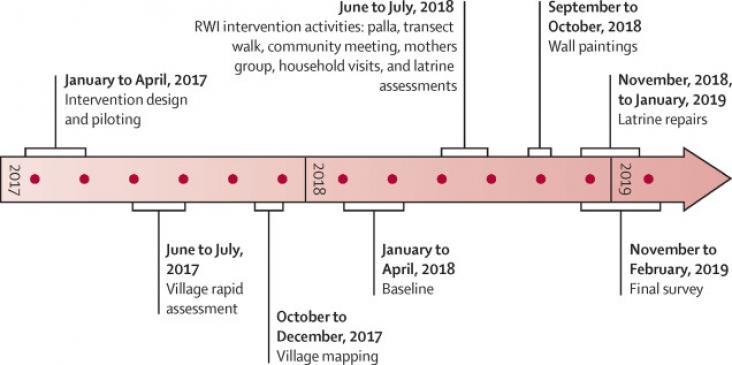To address the dual challenges of water scarcity and global climate change mitigation goals, China has committed to carbon neutrality by 2060 combined with strict water use restrictions. Modeling suggests that transitioning to carbon neutrality will potentially reduce industrial water use by a quarter in China.
Land use and land cover changes in the Jedeb and Chemoga watersheds have been detected in the past 29 years.
This paper addresses pharmaceutical detection in groundwater.
This article contributes to research on public policy and water sanitation.

This study supports SDGs 3 and 6 by investigating a low-cost behavioural intervention designed to increase latrine use and safe disposal of child faeces in India. The study found the intervention modestly increased latrine use and markedly increased safe disposal of child faeces in the short term, but was unlikely to reduce exposure to pathogens to a level necessary to achieve health gains.
This paper presents a water resilience assessment framework that includes a set of resilience indicators that will guide in building urban water resilience.
The paper supports SDG 6 and 3 by discussing toxins in water and the risk of using contaminated water to process food.

Overuse of water has led to the degradation and scarcity of limited water resources, which prompted the modern world to adopt sustainable measures to save water by increasing its reuse and recycling.
Background: WHO promotes the SAFE strategy for the elimination of trachoma as a public health programme, which promotes surgery for trichiasis (ie, the S component), antibiotics to clear the ocular st
Access to hygiene services is a pressing challenge, particularly in low-income countries, and has become even more critical during the COVID-19 pandemic. While the WHO/UNICEF Joint Monitoring Program monitors global access to hygiene services, there's a need for alternative measures of inequality, such as a ternary diagram, to provide more accurate interpretations of the data, revealing spatial disparities and informing evidence-based public policies. [hotspot on urban/rural population in LMIC]
